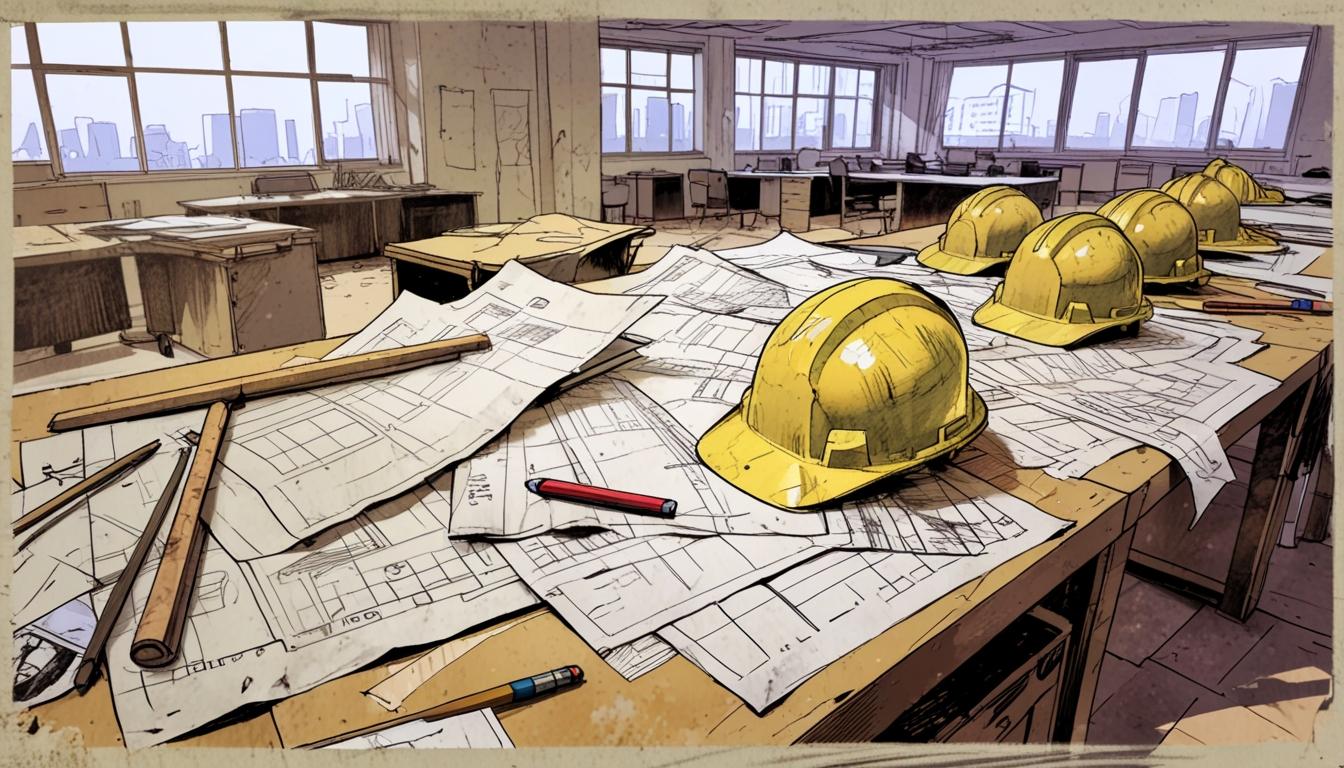Construction Firm Failures Decline in April, Yet Sector Remains Under Pressure
April has brought a glimmer of hope to the UK construction sector as the number of firms entering administration decreased by nearly a third compared to March. According to data from Creditsafe, 21 companies collapsed last month, marking a 32 per cent drop from March's figure of 31. However, this new number still represents a worrying increase of over 60 per cent compared to April 2024, when just 13 firms failed.
Essex-based Breyer Group, a notable player specialising in roofing and renovation, was the largest firm to enter administration during the month. The company's difficulties were attributed to financial strains and cash-flow issues stemming from several problematic contracts, leading its administrators, RSM UK, to declare that Breyer faced "significant pressure from creditors." In a fortunate turn of events, shortly after the administration was filed, Breyer's roofing division was acquired by Cardo Group, ensuring the preservation of nearly 100 jobs. Cardo also took over Breyer's contract with Kingston-upon-Thames Council, valued at £163 million, which services around 6,000 homes.
Another casualty was Sheen Lane Developments, a London-based residential developer that, like Breyer, managed to find a lifeline through a pre-pack administration deal with Radio City Developments. Sheen Lane reported a pre-tax loss of £27 million, revealing the severe challenges posed by a turbulent market, particularly high interest rates.
Despite April's reduction in the number of administrations, experts warn that it is premature to herald this as a sign of recovery. David Hudson from FRP noted that insolvency numbers are expected to stay elevated due to diminished investor interest. He emphasised that while previous downturns may have been mitigated by fresh capital or acquisitions, current market stagnation makes such interventions less likely. Freddy Khalastchi of Menzies echoed this sentiment, cautioning that fixed-price contracts, cost inflation, and tighter lending conditions continue to weigh heavily on firms.
The broader context reveals an industry in persistent decline. According to the S&P Global/CIPS Purchasing Managers' Index, March saw the UK construction sector experience its sharpest contraction since October 2020, with an index score of 46.4 signifying ongoing negative sentiment. Rising payroll costs have led to job cuts and hiring freezes, compounding the difficulties faced by construction firms. Moreover, the latest data from Glenigan's Construction Index indicated a staggering 19 per cent drop in the value of new projects, with civil engineering and residential construction feeling the most pronounced impacts.
Meanwhile, the outlook for companies like Travis Perkins has also dimmed, as the building materials supplier expects flat profits for 2025, a stark contrast to earlier projections. This has resulted in a significant dip in share prices, reflecting broader fears of a slow recovery in the construction market. Crest Nicholson, another housebuilder, is grappling with potential covenant breaches and a drastic decline in profits, signalling the tough terrain that many firms are navigating.
Experts warn that the persistent issues display deeper, long-term challenges rather than isolated problems attributable to recent economic shifts. Gareth Belsham from Bloom Building Consultancy summarised the sentiment well, asserting that while there may be a brief respite in insolvency figures, it is likely more a matter of temporarily holding the ground rather than any fundamental recovery.
As the construction sector continues to grapple with low demand, soaring costs, and high borrowing rates, many firms remain precariously poised on the edge of financial instability. While April's statistics may hint at a possible slowdown in failures, the combination of longer-term challenges indicates that resilience will be tested as conditions evolve.
Reference Map:
- Paragraph 1 – [1], [4]
- Paragraph 2 – [1], [3], [5]
- Paragraph 3 – [1], [2]
- Paragraph 4 – [2], [4]
- Paragraph 5 – [5], [6]
Source: Noah Wire Services
